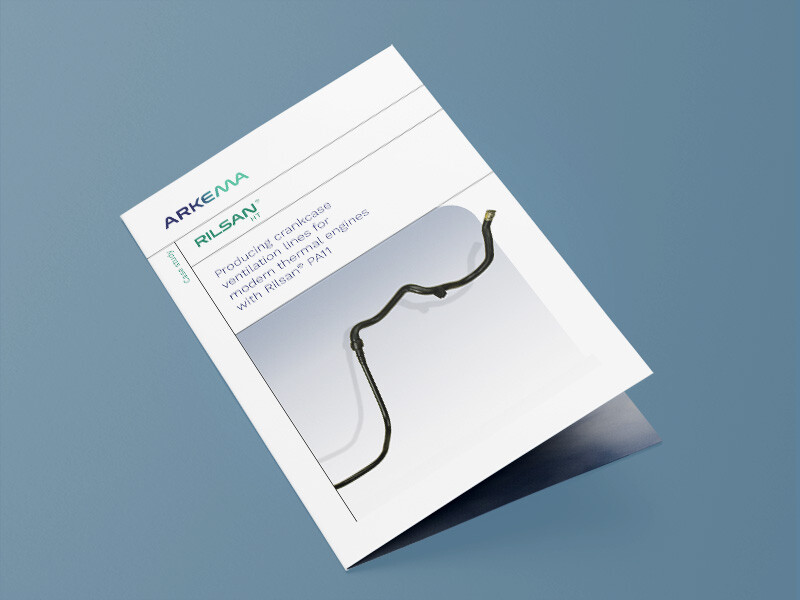Apr 7, 2021 - 3 mins
Case study: Producing crankcase ventilation lines for modern thermal engines Rilsan® PA11

Introduction
As efficient as an internal combustion engine can be, it’s impossible to avoid some of the combustion gases fleeing through piston’s segments to the lower part of the engine instead of being evacuated through the exhaust line. Without a proper evacuation of these gases – known as “blow-by” gases – pressure would continuously increase in the crankcase, which would ultimately lead to severe engine failures, especially because it would sooner or later prevent crankshaft dynamic seals to play their important role. All internal combustion engines are thus equipped with a more or less complex system of Positive Crankcase Ventilation (PCV) aiming at flowing these gases back to the combustion chamber (generally through the air intake manifold). PCV tubes are thus exposed to hot and chemically aggressive conditions. Increasingly stringent environmental regulations have caused the automotive industry to move away from bulky, heavy and expensive rubber hoses towards thinner, lighter and lower cost plastic tubes to produce higher performance PCV lines with larger internal diameters. Rilsan® PA11 is one of the main solutions on the market.
Summary
Industry: Automotive
Application: Positive Crankcase Ventilation (PCV) lines of most modern gasoline engines
Objective: A PCV tube is a high performance system that needs to resist temperatures up to 225°C, and extremely aggressive chemicals, such as biofuels, acids and oils. As tube length and diameter increase, so does the need for lighter but still flexible and competitive solutions to replace traditional rubber (HNBR, AEM or FKM) or low performing plastics (PP, PA6, TPC-ET, etc.) solutions.
Partner: One of the biggest US OEMs and its main innovative tier for PCV application
Material: Rilsan® polyamide 11 & Rilsan® HT polyphthalamide (PPA)
See also
Back to all articles- White paper
Extrusion 3D printing: a comparison of flexible filaments
- Case Study
Case Study: Non-intrusive Concrete Fastener with 3D-Printed PA11 Deformation Layer
- Case Study
